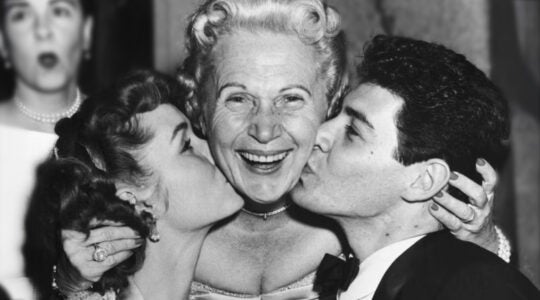(New York Jewish Week) – New York City remains home to the largest Jewish population in the country, according to a new, wide-ranging survey — though its numbers may be declining somewhat, and Jewish identities are shifting.
Close to a million Jews live in the five boroughs, with over 400,000 more in Westchester and Long Island.
The Orthodox population has remained steady while the number of unaffiliated Jews has spiked. More than a third of Jewish households make more than $150,000 per year — though more than 80% of Jewish children in poverty are haredi Orthodox. Almost half say they are liberal or very liberal — though most Orthodox Jews say they are politically conservative.
The survey, published by the UJA-Federation of New York on Thursday, is the communal group’s first Jewish population survey since 2011. Taken in the first half of 2023 with a margin of error of 1.5%, the survey covers data ranging from Jews’ level of education to their ritual observance and household income in each of the five boroughs of New York City, as well as Nassau, Suffolk and Westchester counties. It did not measure attitudes toward Israel.
“Over the past ten years, much has changed in how and where people live across the New York region,” the preface to the report says, noting the impact of the pandemic in particular. But the survey adds, “In 2023, connection to the Jewish community remains salient. Connection to being Jewish, to the Jewish future, and to the NY Jewish community are broadly important to Jewish adults.”
The survey found that New York City is home to 960,000 Jews, with 412,000 more in the three suburban counties. Those numbers reflect a decline from 2011, when the survey counted 1.54 million Jews, including more than 1 million in the five boroughs. It’s also a slight decrease from surveys in 2002 and 1991, which each counted roughly 1.4 million Jews in the eight-county area. (The survey noted that the studies used different methodologies, making direct comparisons difficult.)
As in the previous studies, this one found that Brooklyn is home to the most Jews in the area — 462,000, about a third of the total. A fifth of the area’s Jews live in Manhattan, followed by Queens (11%), Staten Island (3%) and the Bronx (2%).
Reflecting national trends, the survey found that, in the last two decades, there has been a decline in Conservative and Reform households in the New York area. The percentage of Orthodox households in New York has remained about the same, at about 19%, though the survey found that the total number of Orthodox Jews had declined since 2011, falling from 493,000 to 430,000.
After the 2011 survey made a point of noting the significant growth of the area’s haredi population, this year’s survey found that the percentage of haredi households in the area had remained steady, at 11%. Overall, New York City’s Jewish population is almost a third haredi, at more than 300,000, most of whom live in Brooklyn.
There has also been a significant increase in households with “no” or “other” denominational identity, with 47% of households in New York identifying in that group — a 10 point increase since 2011. That also tracks with national trends, according to the Pew Research Center’s 2020 survey of American Jews.
The rate of intermarriage is lower in New York than among Jews in the rest of the country. About 37% of Jews in New York are intermarried, while according to the 2020 Pew Survey, 59% of Jewish adults were intermarried. (The New York survey counted Jewish couples who are intermarried, rather than individuals. The Pew survey found that 58% of Jews had a Jewish spouse.)
The surveys also took a look at racial, ethnic and other identities within the Jewish community. Three-quarters of Jewish New Yorkers identify as Ashkenazi, while 10% identify as Sephardic or Mizrachi. (The remaining 15% identify as “other” or “not sure.”)
Nine percent of households are Russian-speaking. Some 12% of adults identified as non-white, which includes Hispanic, Black and Asian. Fourteen percent of Jewish households include a person who identifies as LGBTQ+. Nearly a quarter of households have an adult with a disability.
The survey also found that there are around 13,000 Holocaust survivors living in New York, with about 65% living in Brooklyn.
Economic stress and mental health are high-priority issues for the Jewish community in New York. While the survey reports that the Jewish population in New York is, in general wealthier than the general population, a fifth of Jewish households are “near-poor” or “poor.” Of this percentage, nearly a third of families that are classified as “poor” or “near-poor” are haredi households. In terms of mental health, the survey reports that one fifth of adults in Jewish households report experiencing symptoms of anxiety and depression, though there appears to be a slight decrease from 2021, when some COVID-19 restrictions were still in effect.
The survey determined that connection to Jewish life remains “salient” among Jewish New Yorkers, with 85% of Jewish adults reporting that being Jewish is important to them, and 73% saying that it is important that their grandchildren are Jewish, both higher than responses nationally. Jews in New York also feel connected to the community in their city, with 62% of respondents saying that they feel connected to some part of the New York Jewish community.
The New York Jewish Week brings you the stories behind the headlines, keeping you connected to Jewish life in New York. Help sustain the reporting you trust by donating today.





